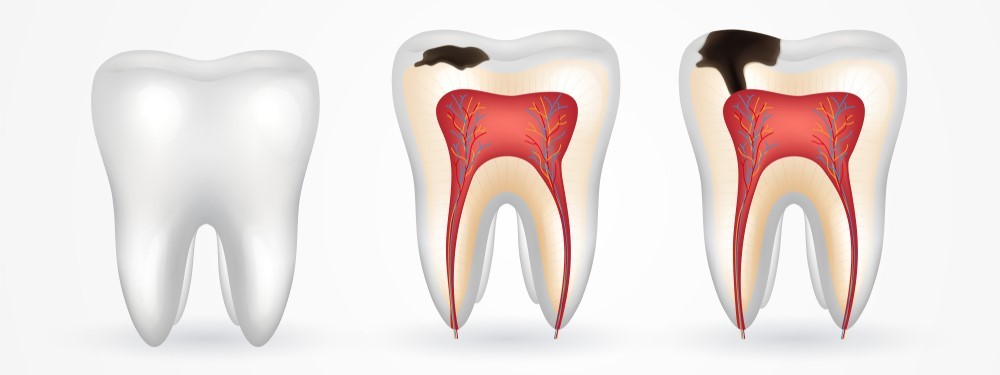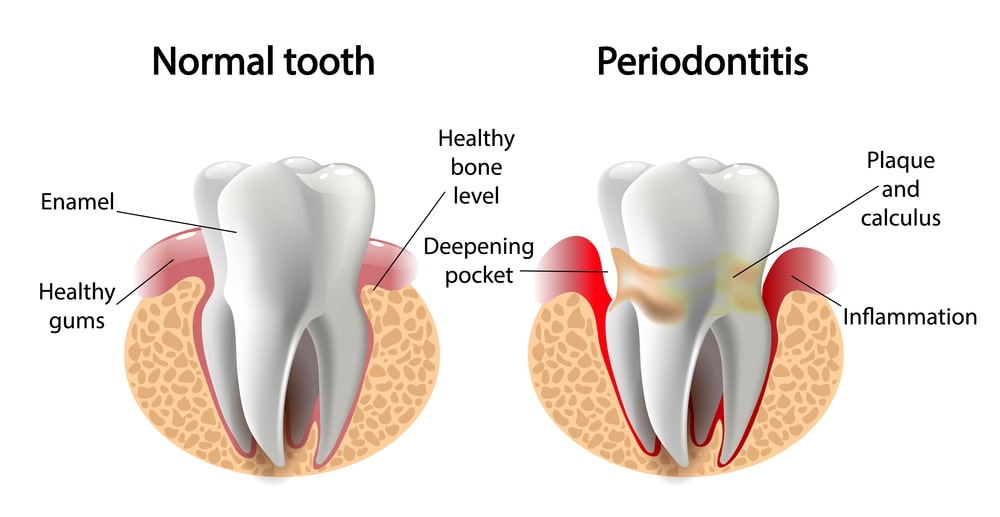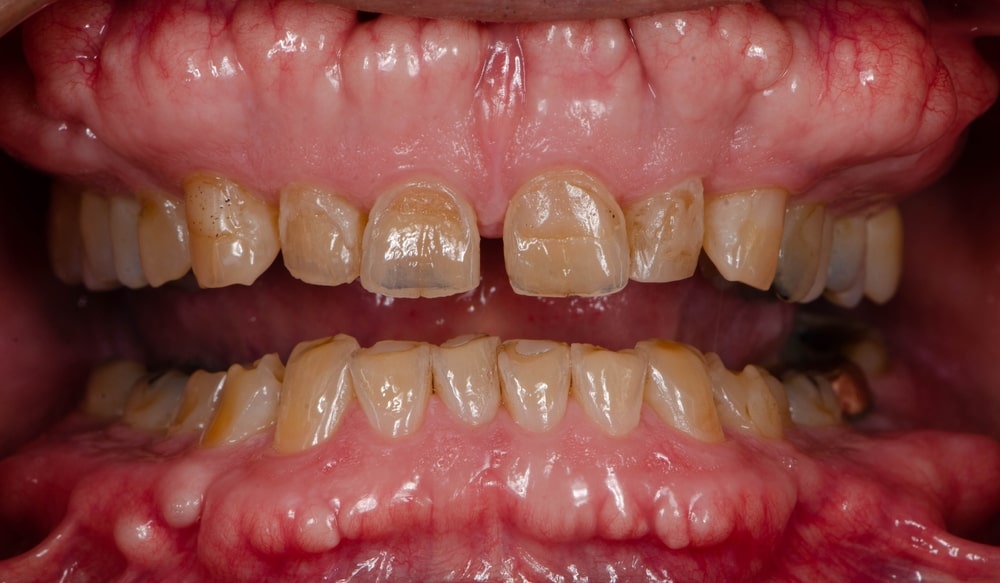The oral cavity is a common problem associated with teeth and gums.
Bad Breath
- Bad breath, also called halitosis, is characterized by an unpleasant odor of the mouth.
- The main causes of bad breath include food, tobacco products, poor dental hygiene, health problems, dry mouth, oral infections, dental problems, or medications.
- Improper oral hygiene results in the retention of food particles in the mouth, promoting bacterial growth between teeth, around the gum, and on the tongue, causing bad breath.
- Odor-causing bacteria and food particles can cause bad breath if dentures are not properly cleaned.
DENTAL CARIES (Tooth decay)

Dental caries or cavities, are caused by to irreversible solubilization of tooth minerals by acid produced by certain bacteria that adhere to the tooth surface and breakdown the tooth enamel resulting in tooth decay or cavities.
- Streptococcus mutants are the main cause of dental decay.
- Various lactobacilli are associated with the progression of the lesion.
- The tooth surface normally loses some tooth minerals from the action of the acid formed by plaque bacteria after ingestion of foods containing fermentable carbohydrates.
GINGIVITIS

Periodontal Disease

Periodontal disease, also known as gum disease is an infection of the gums surrounding the teeth. It is also one of the main causes of tooth loss among adults. The two major stages of gum disease are gingivitis and periodontitis.
If gingivitis persists, the pockets between the teeth and gums might become deeper, sometimes even up to 1 centimeter deep. Bacteria start growing in these gum pockets, and a layer of bacterial plaque builds up on the root and neck of the tooth.
Periodontitis

- Periodontitis is inflammation of the gums, usually caused by an infection, that damages the tissue and bones that support the teeth.
- The most common cause of inflamed gums is plaque.
- Plaque is a thin film that is mainly made up of bacteria and is hardly visible at first.
- It is mainly found where the tooth and gum meet and may feel a bit “furry” when you run your tongue over it.
- The bacteria in the plaque “eat” sugars in food in your mouth, and their waste products can cause the gums to become inflamed and swollen.
- The likelihood of developing periodontitis increased by various factors viz.,
- smoking, metabolic diseases such as diabetes, and hormonal changes during pregnancy.
YELLOW STAINS
Tooth stains may be due to foods, oral hygiene, drink choice, medications, tobacco, and trauma.
Three main categories of teeth stains viz., extrinsic teeth stain (surface of the teeth), intrinsic teeth stain (below the surface of the teeth), and age-related teeth stain (stains combine the results of both intrinsic and extrinsic tooth discoloration).
TOOTH EROSION

Tooth erosion is the loss of tooth structure caused by acid attacking the enamel. Tooth erosion signs and symptoms can range from sensitivity to more severe problems such as cracking.
Early symptoms include discoloration or yellowing of teeth, sensitive teeth (enamel that protects the teeth wears away leaving exposed dentin), rounding teeth (ridges of the enamel wear away leaving flatter or more rounded surface), the appearance of sharper edges of teeth like canines and incisors and appearance of transparent or sandblasted look for the tip of the front teeth. Advanced symptoms include a cracked tooth.
Make sure you also check our other amazing Article on: Cosmetic excipients
